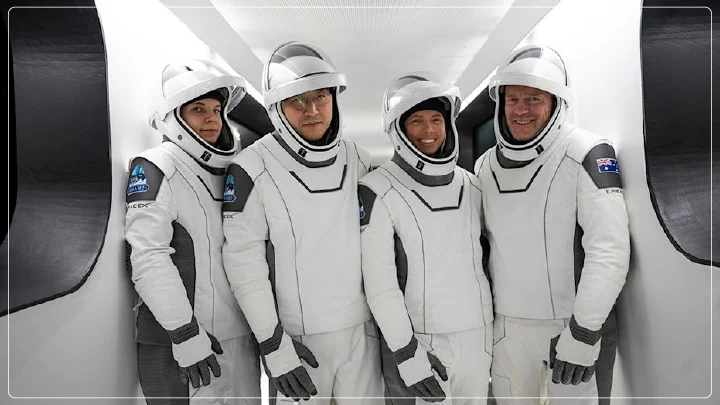April 2025
SpaceX has completed the Fram2 mission, which is a privately funded human spaceflight that will orbit around Earth's polar regions. The mission-the first-ever human prospect for going to complete polar orbits around the North and South Poles- was named after the historic Norwegian explorative ship Fram. It is sponsored by cryptocurrency entrepreneur Chun Wang and has an international crew of experts from diverse fields.

The crew of Fram2 comprises four phenomenal personalities: cryptocurrency entrepreneur and private astronaut Chun Wang; Norwegian filmmaker and cinematographer Jannette Mikkelsen; German electrical engineer and robotic researcher Rabea Rogge; and Australian polar adventurer and private astronaut Eric Phillips. Staying in space for three to five days, this crew will conduct 22 experiments, including groundbreaking studies in radiation measurement and mushroom cultivation, while circling above the North and South Poles.
Unlike typical launches from the U.S., which usually head east or The Fram2 mission took off southbound across Florida and Cuba to take advantage of the rotation of the Earth going northeast. Due to the unusual trajectory of the mission, SpaceX had to modify its flight software to provide for the possibility of diverting the spacecraft in case of an emergency away from populated areas; this precaution was necessary.
The mission is powered by SpaceX's increasingly trusty Falcon 9 booster. It will launch Dragon into a daring polar orbit. While polar orbits are routinely used for satellites performing Earth observation, weather, and environmental mapping, this is a first for any human mission attempting such a path.
The Fram2 Mission is an impressive achievement in the world of orbital mechanics and a testbed for scientific exploration. Some of these include experiments on radiation measurement and growing mushrooms. The crew will be exposed to relatively higher doses of ionizing radiation during the journey over the North and South Poles, making the findings important for the understanding of radiation exposure possible in polar orbits and future deep-space missions. The other innovative experiment involves culturing oyster mushrooms under microgravity conditions, which could ensure a food source for long-lasting human missions into space.
SpaceX's Fram2 mission is named for Norwegian explorer Roald Amundsen's Fram and seeks to explore new realms in space exploration through polar-orbiting. While the mission does encounter high levels of ionizing radiation, the short duration should minimize potential health effects. An extreme solar flare would present danger and would therefore require extensive monitoring. SpaceX developed special software for safety and accuracy and avoided populated areas in the case of faults during inception. The name, of course, harkens to the Fram, the steam-and-sail-powered ship used by Amundsen.
SpaceX identifies its Fram2 initiative as a technological milestone toward the hot human spaceflight trajectory. In addition, successful Fram2 execution would open doors to similar international missions for data-gathering or long-term lunar or Martian excursions. Such missions would be based on SpaceX's pioneering effort in polar human spaceflight and may serve to stimulate other private entrepreneurial efforts down innovative pathways for such missions, potentially AS A WHOLE speeding scientific discovery and commercial space travel. Undoubtedly, applications of the successful Fram2 mission could range anywhere from Earth observation and the technologies behind it to sustainable food production to feed future colonies in space.
April 2025
April 2025
April 2025
April 2025